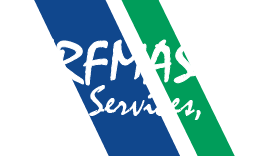The end of each February marks the beginning of swarming season for Florida Termites.Many homeowners seek professional termite extermination only after they have identified an infestation. This is a common mistake, as by this point Florida termites are already well-established, and are often costly to exterminate. The most effective and efficient solution is regular inspection and prevention. Although commonly thought of as one group, Florida termites are actually composed of four different varieties: Florida Drywood termites, Florida Dampwood termites, Florida Subterranean termites, and Florida Formosan termites. Each variety has unique characteristics, effectively rendering many common “Do-It-Yourself” termite extermination treatments insufficient or impotent.
Florida Drywood Termites live exclusively in wood and do not require any contact with soil. These Florida termites acquire their necessary moisture through the digestion of cellulose, found in most common household items. These invaders have a tendency to create multiple colonies within the same structure. This variety of termite is typically 3/8-inch long with a pale colored body. The most common way to identify an infestation is by their fecal pellets; however, these are often mistaken for sawdust.
Florida Dampwood Termites do not live in soil, but rather prefer damp or rotting wood to establish its colony. This variety specifically targets decaying ground wood that is common to the exterior of homes. It is vital for Florida homeowners to address moisture prone areas, both on the interior and exterior of their home, especially in tropical climates. These pests are also common in trees, often hallowing out branches and breaking limbs, causing property damage. Again, the easiest way to identify an infestation is by their fecal matter. But once more, these pellets are difficult to detect, as they become wet and stick to the walls of the colony.
Florida Subterranean Termites are the most commonly encountered variety of the Florida termites. They build large colonies with intricate tunnel systems and have as many as a million members. Although this variety of termite is most likely to swarm during the spring months, Florida’s climate allows them to do so year-round. Their colonies are typically found in soil, as they require constant contact with a moisture source. These pests construct mud tunnels up to 60 feet in length in order to reach food sources. They are typically a transparent-yellowish color, often with pale bodies. It is important to regularly inspect the perimeter of your home for these “termite tubes”.
Florida Formosan Termites are also referred to as “Super Termites” because of their reputation as being the most destructive of the Florida termites. They have the largest colonies of any termite, reaching as large as 300 feet and boasting as many as eight million members. These large nests can have multiple kings and queens constantly reproducing, with a mature queen laying as many as 1,000 eggs per day! The sheer size of their colonies, combined with their ability to consume entire planks of wood while leaving the surface intact, make them nearly impossible to detect and extremely destructive. These insects are a yellowish-pale color, with the coloring for kings and queens varying greatly from light to dark.
Call to make an appointment with one of our expert pest control technicians; we will identify the swarming insects for you.
(941) 923-1956
